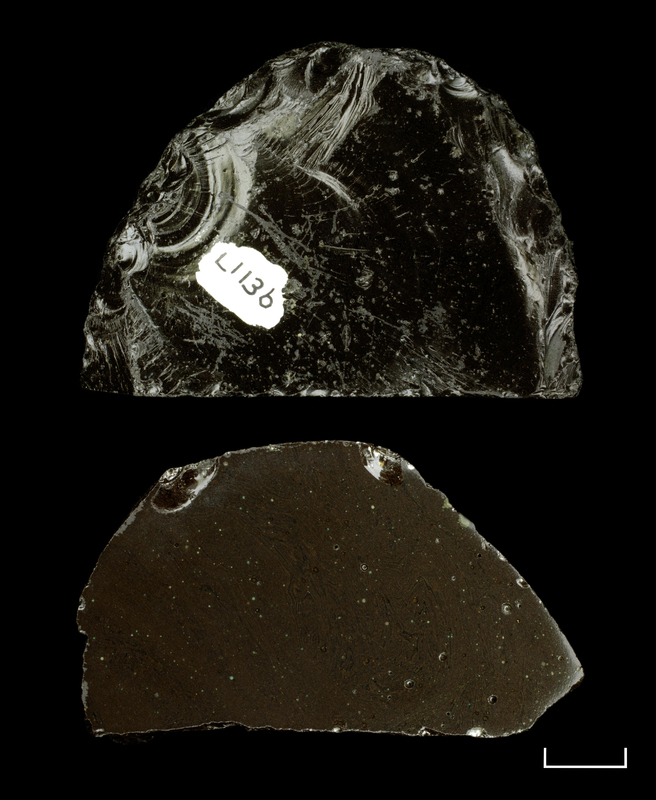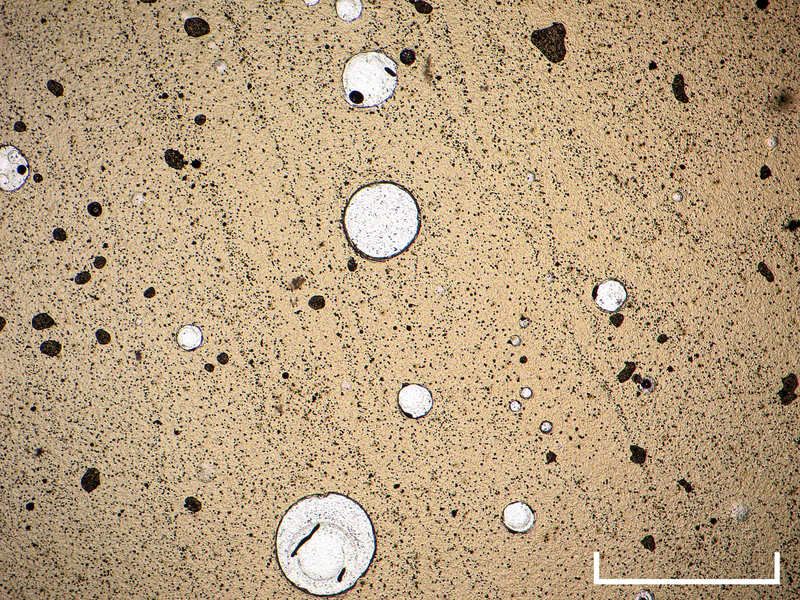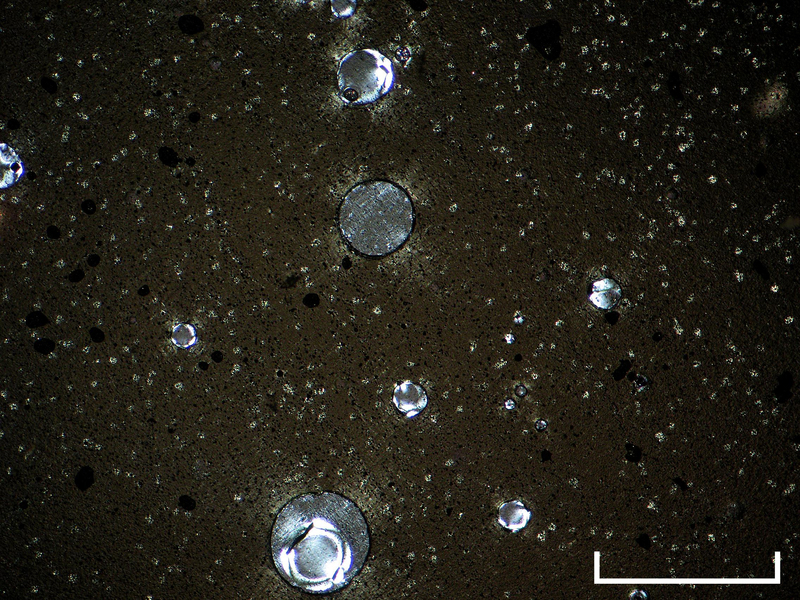- Home
- Rocks
- Type fossils
- Fossil Specimens
- Minerals
- Glossary
- Stratigraphic Chart
- Michel-Levy Chart
- Classification of igneous rocks
- University of Cambridge
- Department of Earth Sciences
- ESC Library
- Moodle
- Sedgwick Museum
- DoITPoMS
- Mindat.org
- Microfossils
- Bryozoans
- Webmineral
- Tree of Life
- CrystalMaker
- Virtual Microscope
L113 Rhyolite, glassy (obsidian)
Title
L113
Rhyolite, glassy (obsidian)
Subject
Age
Cenozoic
Location
Yellowstone, U.S.A.
Description
NB, the term ‘obsidian’ refers to a jet-black glassy rock. It usually has a rhyolitic composition, but not always.
Hand Specimen
Black rock with the characteristic vitreous lustre and conchoidal fracture of glass.
The surfaces are scattered with tiny spherical holes. These are vesicles.
Thin-section
Holding the thin-section up to the light, the spherical vesicles within the brown glass are clearly visible.
Under the microscope the pale brown glass is scattered with tiny opaque speckles in a weak flow texture.
Spherical vesicles are mostly filled in with mounting medium; notice its distinctive appearance under cross-polarised light. There are a small number of opaque infilled circles. These could be artefacts or black clumps of iron oxide.
Tiny crystals are scattered throughout the glass, indicating that some devitrification has occurred. Circles of devitrification, probably nucleated on oxide crystals.
Rock History
Glass → Very rapidly cooled magma. Probably extrusive.
Vesicles: perfectly spherical, indicating that they were not being sheared by magma flow, i.e. the magma was not flowing.
Rock Name
glassy rhyolite
glass
obsidian
Citation
“L113
Rhyolite, glassy (obsidian),” 1A Collections, accessed April 9, 2024, https://wserv3.esc.cam.ac.uk/p1acollections/items/show/7.
Rhyolite, glassy (obsidian),” 1A Collections, accessed April 9, 2024, https://wserv3.esc.cam.ac.uk/p1acollections/items/show/7.



